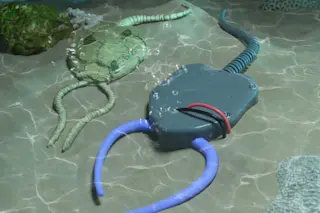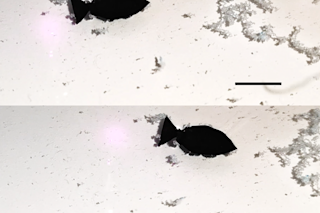The Crabster prepares for its first dip in the ocean last summer. (Credit: KIOST) To truly see the ocean, scientists must be one with the ocean. This sage-like proverb isn’t printed in any ancient scrolls, but oceanic researchers from South Korea are certainly putting it to practice. Taking a cue from crustaceans that scurry along the ocean floor, researchers from the Korea Institute of Ocean Science and Technology (KIOST) have built and tested a car-sized robotic crab to explore the seafloor. The six-legged robot — with a paint job strikingly similar to the Oscar Meyer Wienermobile — is aptly named the Crabster CR200. The Crabster’s design doesn’t just mimic Mother Nature, it also helps the team from Korea literally see the ocean. Typically, underwater vehicles deployed by researchers utilize propulsion to troll the ocean’s depths, but that method of locomotion stirs up vision-impairing clouds of sediment. The Crabster crawls along ...
Crab-Like Sea Rover Walks on Six Legs
Explore deep-sea mysteries with the Crabster CR200 robotic crab, set to revolutionize underwater research missions.
More on Discover
Stay Curious
SubscribeTo The Magazine
Save up to 40% off the cover price when you subscribe to Discover magazine.
Subscribe













